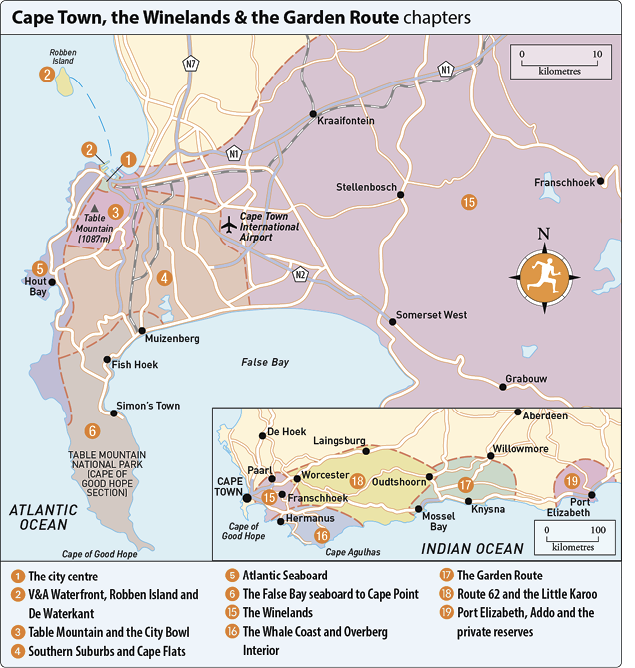How to use this Rough Guide ebook
This Rough Guide is one of a new generation of informative and easy-to-use travel-guide ebooks that guarantees you make the most of your trip. An essential tool for pre-trip planning, it also makes a great travel companion when youre on the road.
From the section.
Detailed area maps feature in the guide chapters and are also listed in the , accessible from the table of contents. Depending on your hardware, you can double-tap on the maps to see larger-scale versions, or select different scales. There are also thumbnails below more detailed maps in these cases, you can opt to zoom left/top or zoom right/bottom or view the full map. The screen-lock function on your device is recommended when viewing enlarged maps. Make sure you have the latest software updates, too.
Throughout the guide, weve flagged up our favourite places a perfectly sited hotel, an atmospheric caf, a special restaurant with the author pick icon  . You can select your own favourites and create a personalized itinerary by bookmarking the sights, venues and activities that are of interest, giving you the quickest possible access to everything youll need for your time away.
. You can select your own favourites and create a personalized itinerary by bookmarking the sights, venues and activities that are of interest, giving you the quickest possible access to everything youll need for your time away.
Above V&A Waterfront
Introduction to Cape Town the Winelands & the Garden Route
Cape Town is southern Africas most beautiful, most romantic and most visited city. Its precolonial Khoikhoi inhabitants recognized its extraordinary physical setting when they referred to Table Mountain, the citys emblematic landmark, as Hoerikwaggo the mountain in the sea. If the landscape doesnt take your breath away, its high-octane activities from paragliding to kitesurfing should do the trick, and thats before youve sampled the nightlife. Which isnt to say Cape Town is just about adrenaline. Away from the thrills and pumping party scene, youll find a city boasting breathtaking beaches, rolling vineyards and fine museums enough to keep you busy over an extended visit. Despite this, most visitors find the time to escape the city to the Winelands, to sample South Africas celebrated wines, and further east along the Garden Route, whose draws include unparalleled whale watching, crashing seascapes, dappled forests and lions, leopards and elephants in the best game reserve in the southern half of the country.
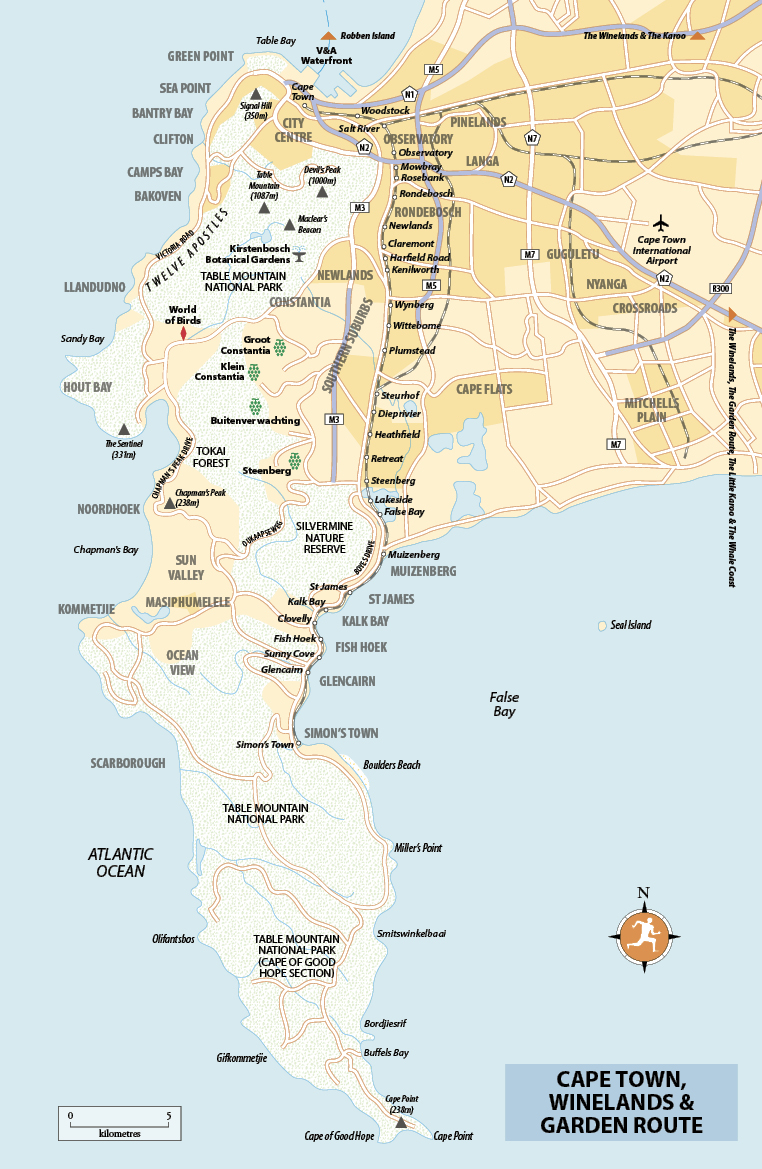
Cape Town has a rich urban texture too, etched in its diverse architecture. In the suburbs, shimmering white Cape Dutch homesteads, rooted in seventeenth-century northern European traditions, characterize the grand estates of the Constantia Winelands; in the city, Muslim slaves, freed in the nineteenth century, added their minarets to the centres skyline; and the English, who invaded and later freed these slaves, introduced Georgian and Victorian buildings. In the tight terraces of the Bo-Kaap quarter and the tenements of District Six, the coloured descendants of slaves evolved a unique, evocatively Capetonian brand of jazz, which is well worth catching live. Indeed great sounds, along with high standards of accommodation, smart restaurants, laidback cafs and a vibrant gay scene, make visiting Cape Town a truly cosmopolitan experience.
But despite a reputation for greater liberalism and racial tolerance during apartheid than the rest of the country, Cape Town has been the slowest South African city to embrace post-apartheid multiracialism. Ever since the mid-seventeenth century when Jan van Riebeeck, leader of the first white people to settle in South Africa, thought of digging a canal across the Cape Peninsula to cut it off from the rest of Africa, Cape Town has stood aloof from the rest of the country. For 350 years its white establishment endeavoured to maintain an illusion that the city was somehow really European, despite its location.
Under apartheid, black people were forcedly removed from the Western Cape, where coloured people were given preference in the job market. Consequently, black Africans make up less than forty percent of the Mother City, whereas they comprise over eighty percent nationwide; the Western Cape and neighbouring Northern Cape are the only provinces where coloured, rather than black, people form the majority. For most Capetonians, living in crowded townships, poverty and sky-high crime rates are part of everyday life.
Cine city
Following the success of U-Carmen eKhayelitsha at the Berlin Film Festival in 2005, Cape Town was not only lauded for showing its grittier face on film, but Hollywood directors began to realize the citys chameleon-like ability to recreate anything from French boulevards to hectic New York traffic. Cape Town was subsequently able to stand in for 35 diverse locations for the 2005 Nicolas Cage movie Lord of War, including Bolivia, Beirut, Berlin, the Caribbean, Sierra Leone, Indonesia, Odessa and New York City.
Nowadays, Capetonians are increasingly spotting major Hollywood names in bars along the Atlantic seaboard beaches, as 24, starring Kiefer Sutherland, Blood Diamond with Leonardo DiCaprio and Jennifer Connelly, and Clint Eastwood-directed Invictus, starring Matt Damon and Morgan Freeman, have been shot in the city. Following the arrival of the world-class R350m Cape Town Film Studios in 2010, the city has hosted the filming of major Hollywood productions, including Dredd and Mandela: Long Walk to Freedom, while scenes from the fourth season of TV drama Homeland were shot in the Mother City in 2014.
What to see
Table Mountain, frequently mantled by its tablecloth clouds, is the solid core of Cape Town, dividing the city into distinct zones, with public gardens, wilderness, forests, hiking routes, vineyards and desirable residential areas. To its north lies the city centre, home to the citys most important museums and galleries, and with a buzzing street life buskers, hawkers and market traders. In the adjacent Bo-Kaap Muslim quarter, colourful terraces and restaurants serving Cape Malay curries add a local flavour to the citys heart. A stones throw from the centre, the V&A Waterfront is a popular spot for shopping, eating and drinking in a highly picturesque setting among the piers and quays of a working harbour. Its also the embarkation point for ferries to Robben Island, the site of Nelson Mandelas notorious incarceration. The rocky shore west of the Waterfront is occupied by the inner-city suburbs of Green Point, De Waterkant and Sea Point, their seafronts and back-streets crammed with excellent restaurants and accommodation to suit all budgets. Equally good for accommodation, but quieter, more leafy and upmarket, the

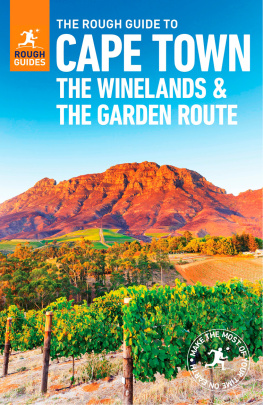
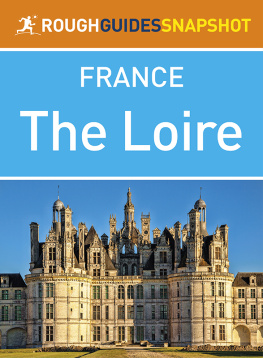
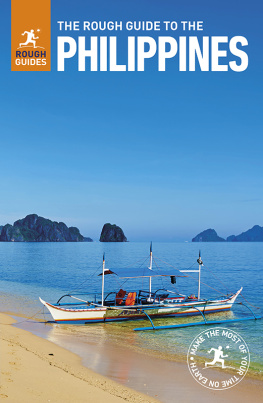
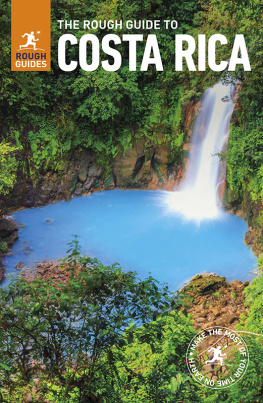
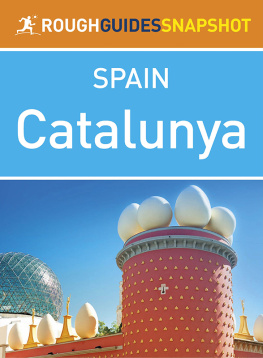
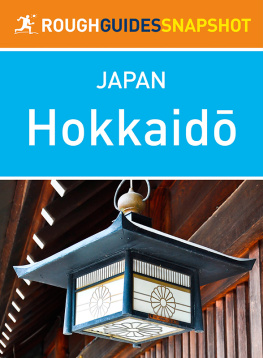
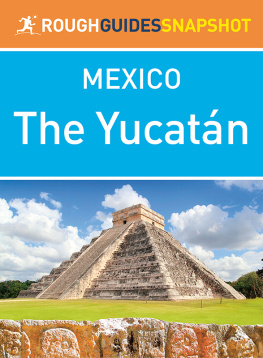
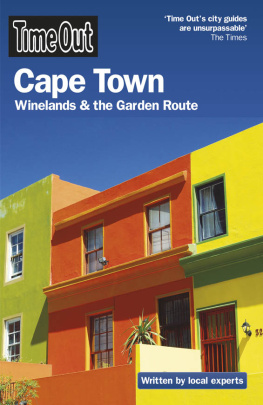
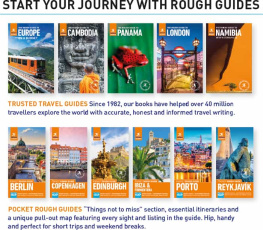
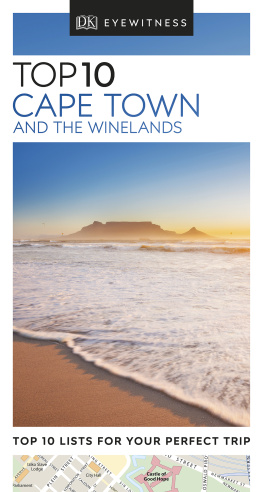
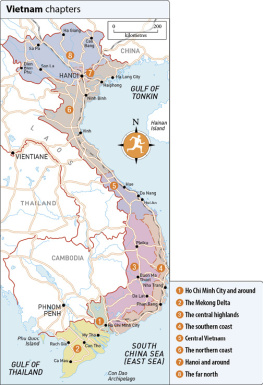


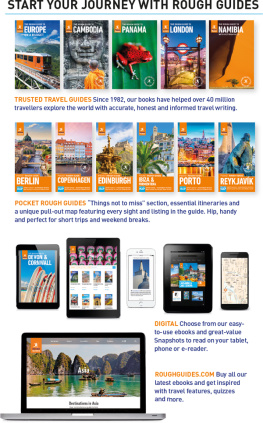
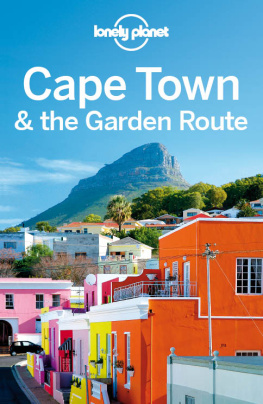
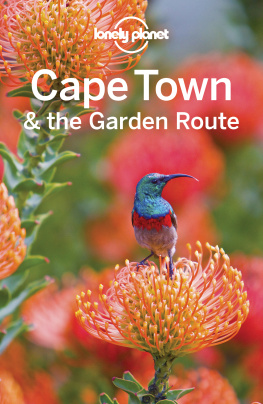
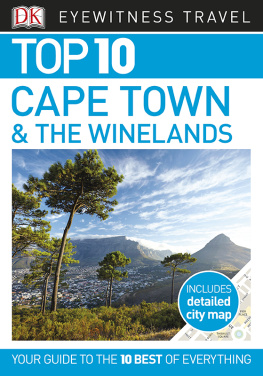
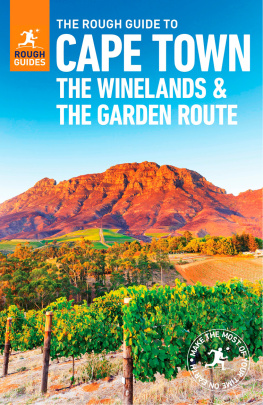
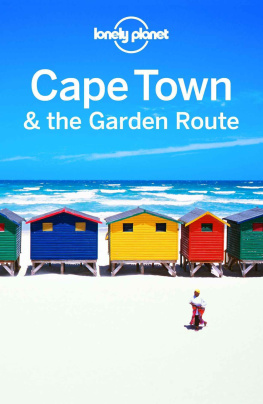
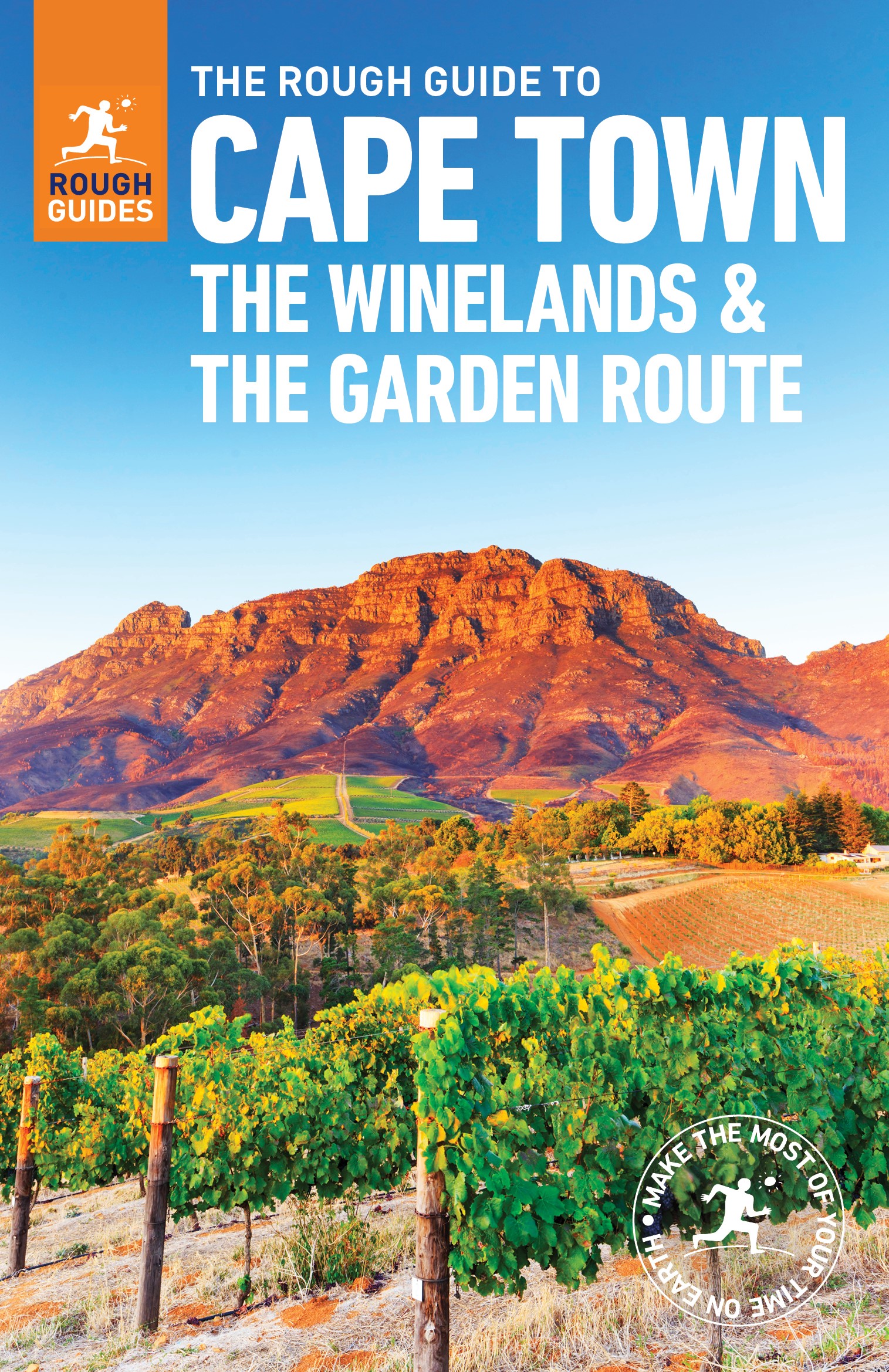
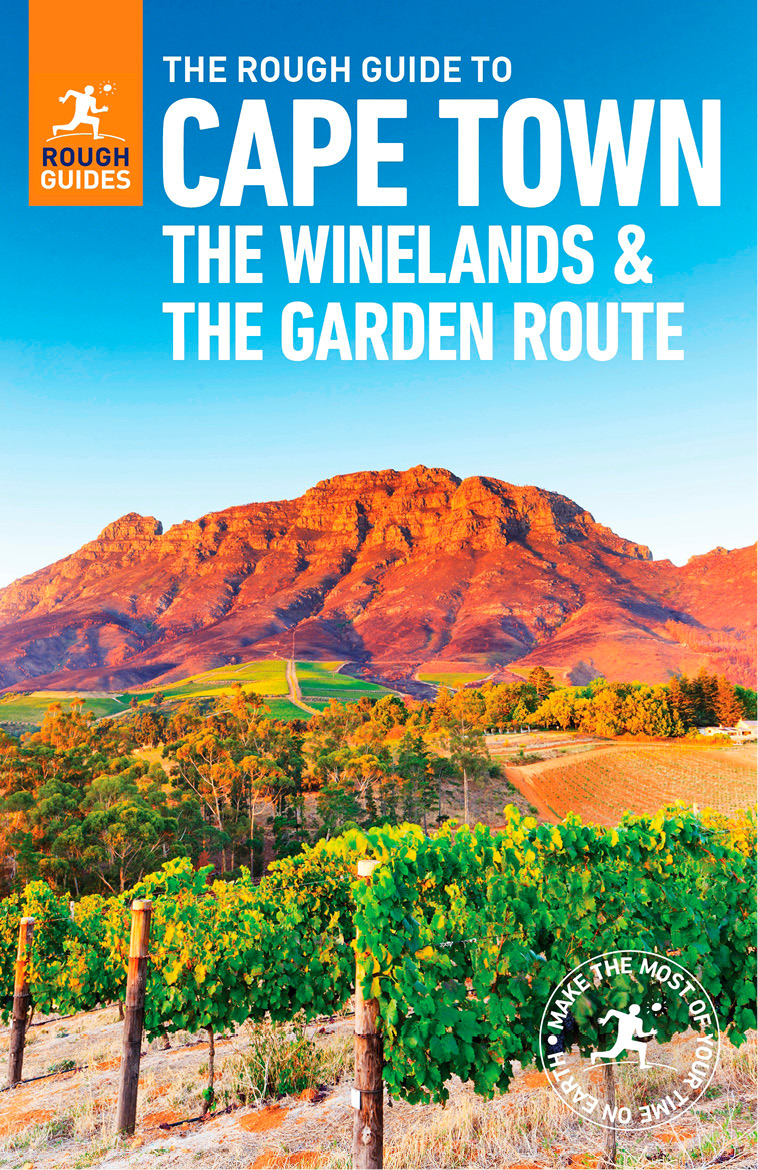
 . You can select your own favourites and create a personalized itinerary by bookmarking the sights, venues and activities that are of interest, giving you the quickest possible access to everything youll need for your time away.
. You can select your own favourites and create a personalized itinerary by bookmarking the sights, venues and activities that are of interest, giving you the quickest possible access to everything youll need for your time away.